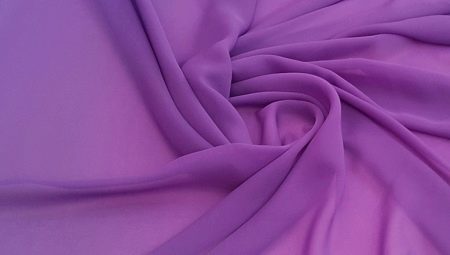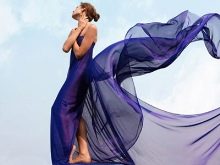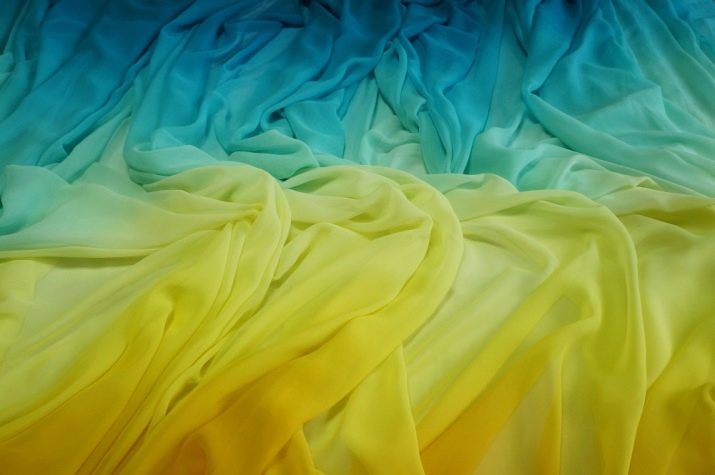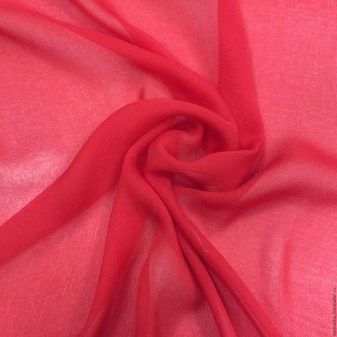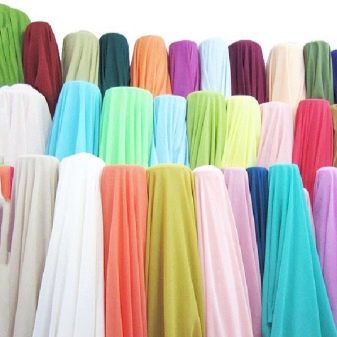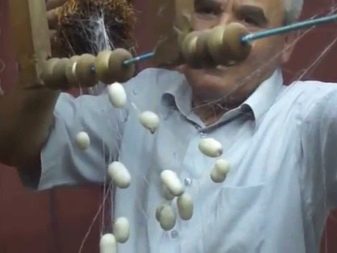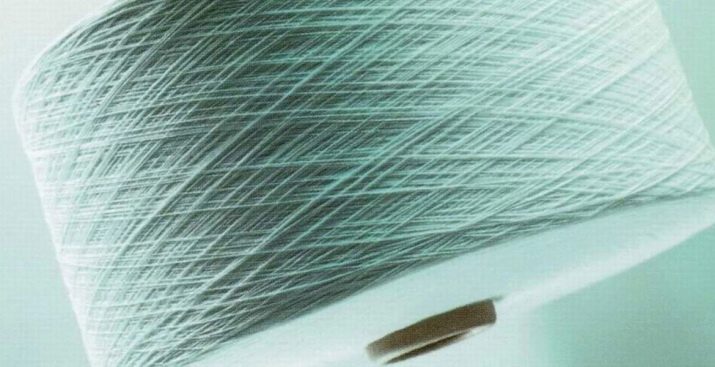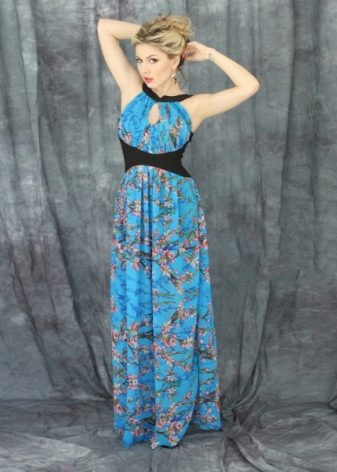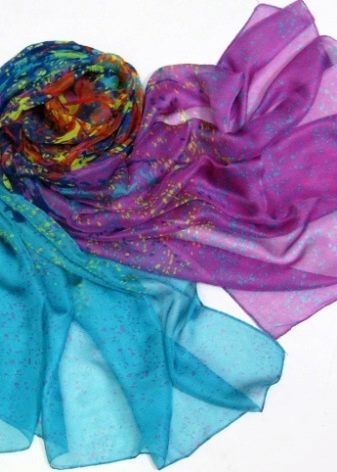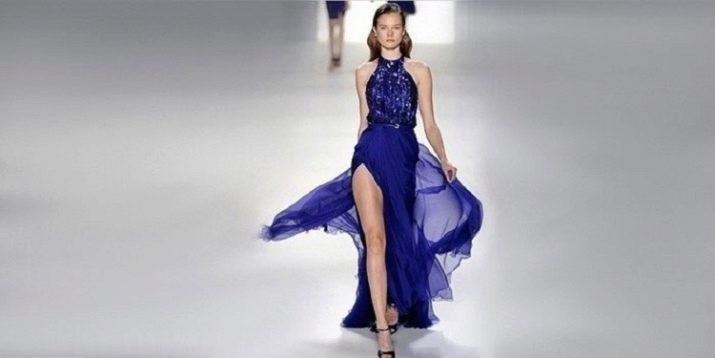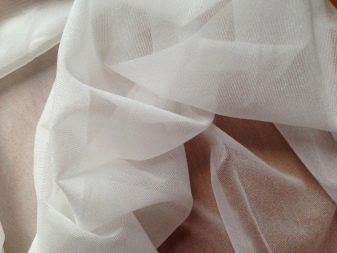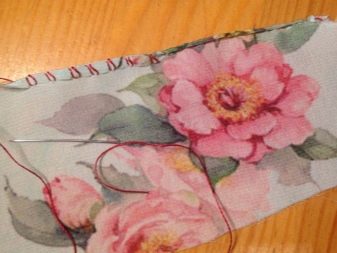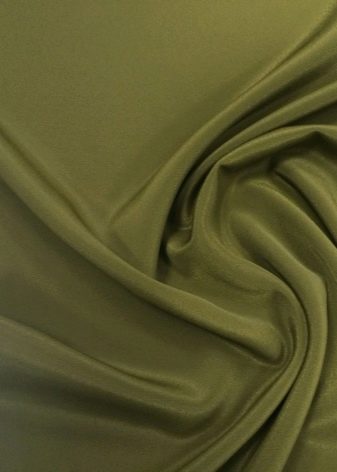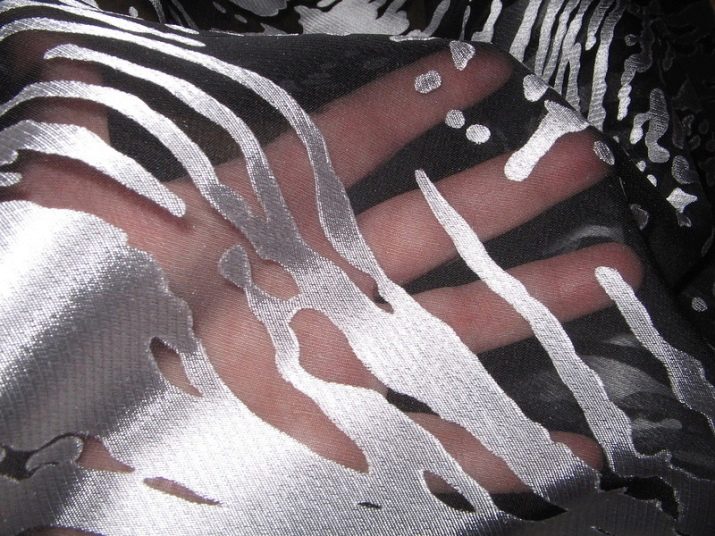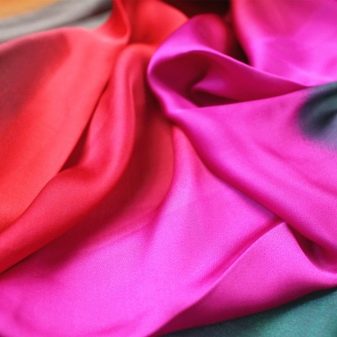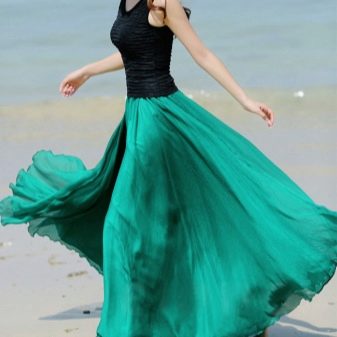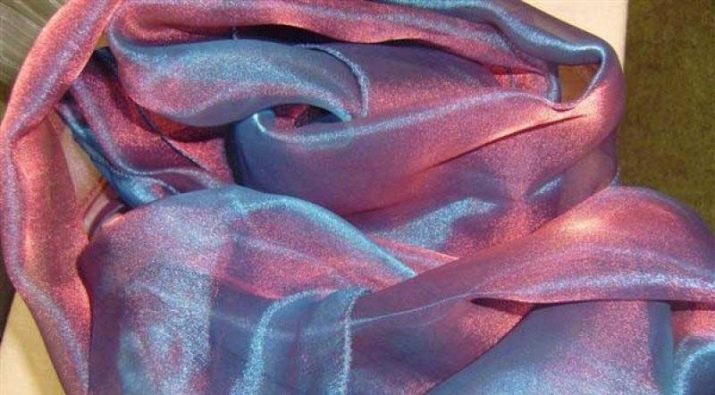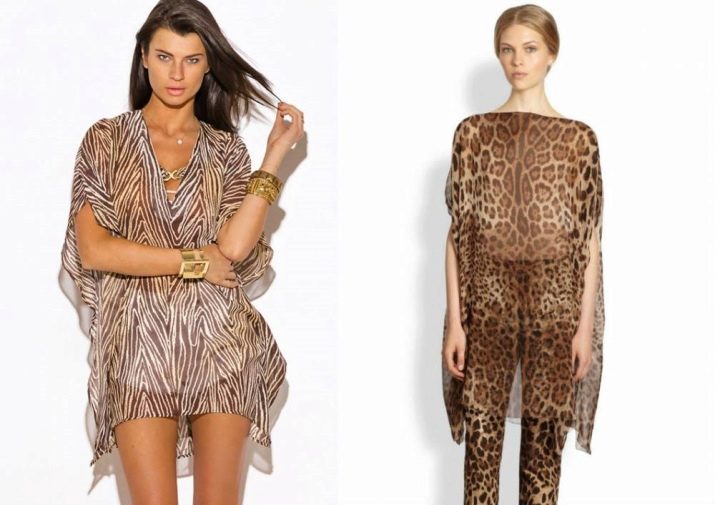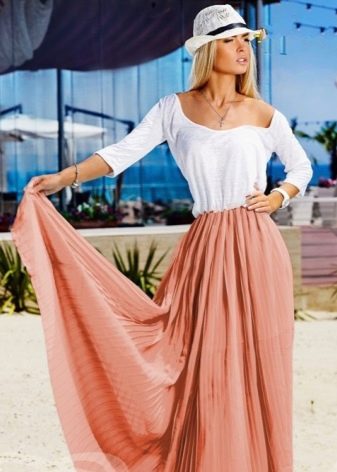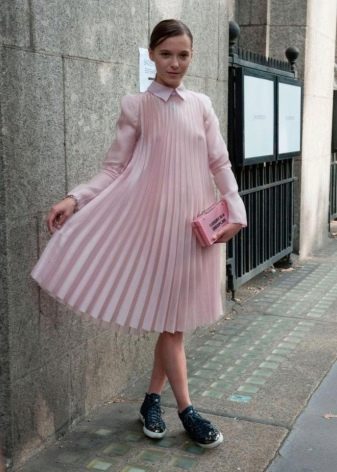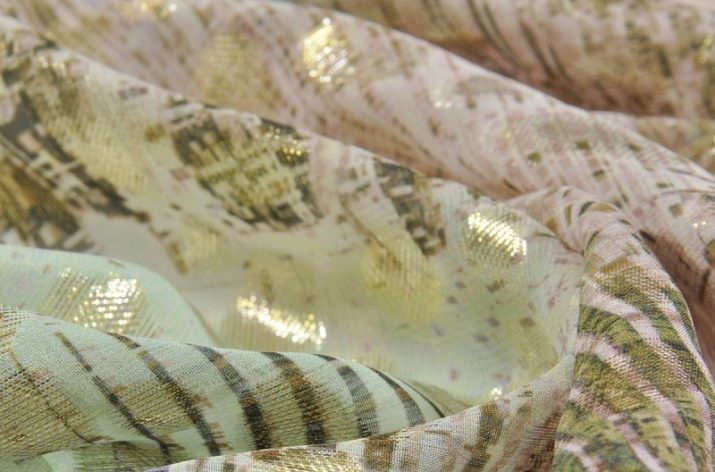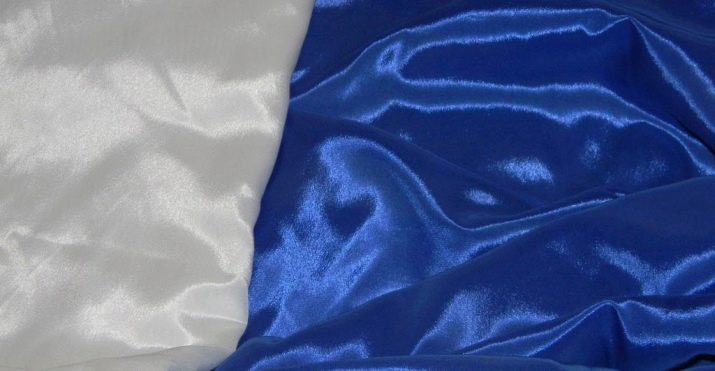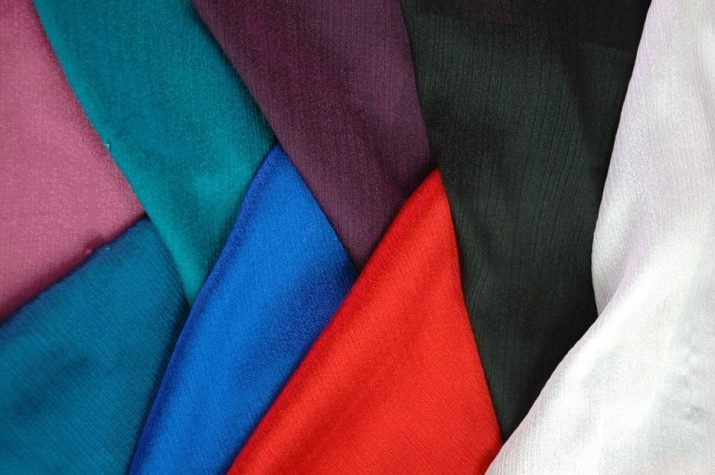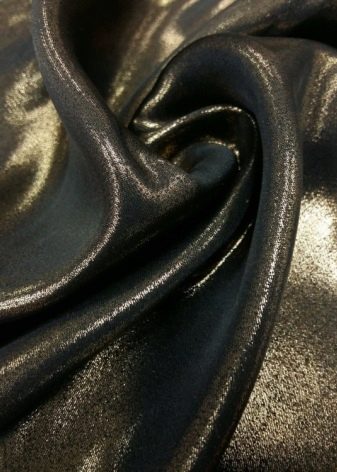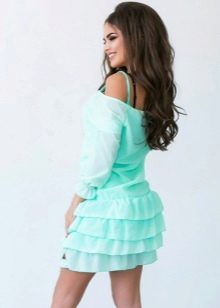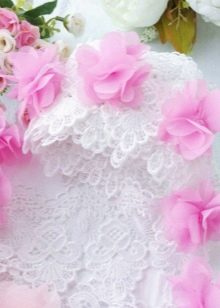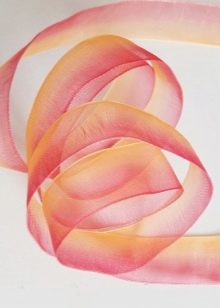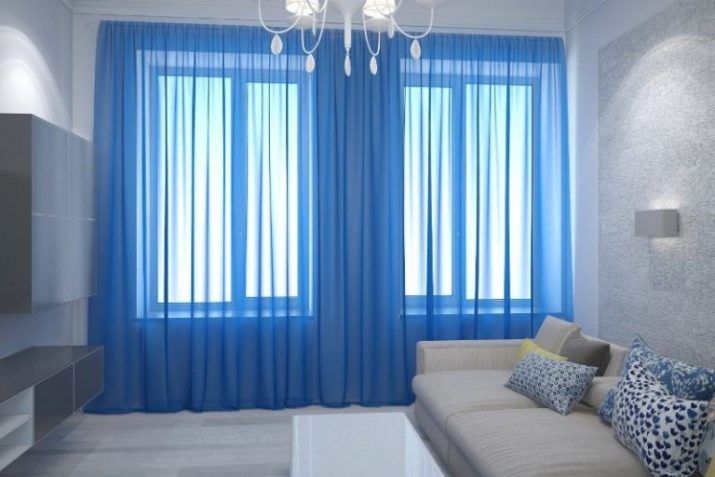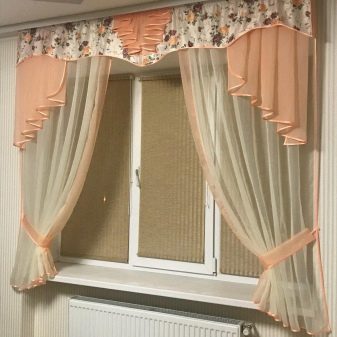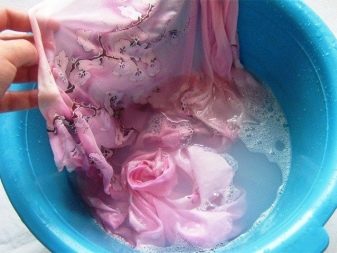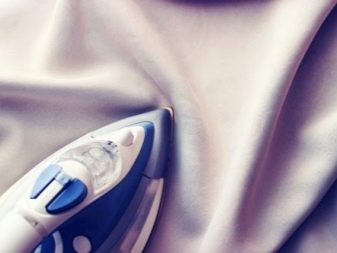Air chiffon translucent fabric with sand structure is known to all. Ultrathin and durability of the fabric are provided by a special interlacing of threads. The fabric itself is made from natural, synthetic or mixed material.
Chiffon fabric is widely used for tailoring, accessories, and also in an interior and creativity.
Natural material or synthetic?
The homeland of the material is China. Chiffon was originally made from natural silk threads. It was considered an elite material, which only noble and wealthy people could afford. It was worn with dignity and special chic. In the XVIII century, chiffon was in Europe. There are suggestions that he got there much earlier on the so-called silk trade route, and it began to be produced in European countries much later.
Initially it was manual labor. With the expansion of demand began to form manufactory, and then was established factory production. At the beginning of the 20th century, the industry underwent a technological revolution, which resulted in the production of blended fabrics based on chiffon fabric.
The old material was expensive, which was associated with the technology of production of natural fabrics. But with the invention of caprone, polyester and synthetic analogues, the technological process of production has become much simpler, which has led to a decrease in prices for material and an increase in the scale of production. Synthetic fabrics were not worse than natural ones: they were just as bright, but at the same time more durable. Savings on manual labor and natural resources paid off at the expense of mass consumer demand.
Chiffon has a triangular cross-section of plain weave yarns, which gives it additional durability properties. In the description of the fabric, each manufacturer indicates the exact composition and types of chiffon fabric fibers. Depending on the additives, chiffon looks different.
In part, it acquires the qualities and properties of mixed threads. But basically it is flowing flowing fabric, gently refracting light.
Composition
The composition of chiffon can be included yarns of different types of fabrics:
- silk;
- cotton;
- viscose;
- polyester;
- polyamide.
Silk is obtained from silkworm cocoons, unwinding and twisting them into threads.
Cotton is grown on special cotton plantations. A cotton plant after ripening gives a box with fibers, which, after several processing steps, become durable threads.
Viscose yarns are made of wood through a complex chemical process of splitting fibers with the addition of chemical solutions. It turns out soft flowing fabric, very pleasant and comfortable to the body.
- Polyester yarn produced by chemical means.
- The polyester fabric has an increased strength factor, ropes, cables, as well as machine tires and much more, including fabrics, are made from it.
- Polyamide made from plastic is also used in the textile industry. Its fibers give chiffon special strength and durability.
Specifications
In modern industry, domestic and foreign manufacturers use all types of these fibers, combining them, creating the most optimal combinations that improve the characteristics of chiffon canvas.
The main characteristics of chiffon:
- strength, which is achieved by incorporating additional fibers into the fabric;
- hygroscopicity is provided by a cotton filler that can absorb moisture, without its retention;
- the softness of chiffon is ensured by viscose fibers;
- Polyester and synthetic threads give resistance to crushing and shrinkage: fabrics with their content keep their shape well, do not shrink after washing and do not stretch when worn;
- beautiful appearance is the main quality of chiffon: the special luminescence and unique structure of the fabric will not leave anyone indifferent.
Advantages and disadvantages
Chiffon is considered a specific fabric with many advantages and features. Natural raw material provides her personality and unique charm. There are also other positive qualities.
- Aerial texture. It is very comfortable to wear, things made of lightweight fabric do not hinder movement.
- the cloth OK painted and keeps the color. Even with frequent washing it does not fade and does not fade in the sun.
- Chiffon good keeps shape, amenable to drapery and pleating.
- Hypoallergenic and breathable properties The fabrics provide comfort and quality of the items made from this fabric. The fabric “breathes” along with the skin.
- Durability and strength - important characteristics in the number of positive properties of chiffon.
- Antibacterial properties provide clothing protection against reproduction of unwanted flora even at high humidity.
- Chiffon can be attributed to anti-stress fabrics. Due to its mild tactile healing effect, it perfectly soothes and harmonizes, raising vitality and mood.
Chiffon is very demanding, has a number of characteristics and properties that put it on a par with delicate fabrics.
- Sliding and shedding fabric when cutting and sewing. Therefore, often use structuring devices and pads, which in the process hold the fabric, not allowing it to crumble.
- Types of viscose chiffon are subject to mechanical deformations, things soon wear out and rub down. In this case, they need care with the help of special products from natural ingredients (like a spray based on beeswax or paraffin).
- If used carelessly, chiffon garments can form puffs, which will be very difficult to handle. Special rinsing agents that are added to the water for rinsing after washing will help to avoid them.
- Monochromatic fabric can change color with constant exposure to direct sunlight. Try in the care of such things to use tools that reflect harmful rays.
- At tailoring from thin fabric lining material and the fixing overlays for seams are necessary.
Knowing and taking into account the “character” of chiffon fabric, one can learn to respect the attitude. Then the things out of it will last you much longer.
Types and their properties
Modern industry offers a wide variety of types of chiffon fabrics for any - even the most demanding - taste. There are inexpensive, luxury, everyday, festive and household types of fabrics.
Crepe chiffon
Created from highly twisted crepe threads by special alternation.
The fabric is practically not wrinkled and keeps its shape well in textiles.
Jacquard chiffon
Printed material with visual effect embroidered invoice.
Satin chiffon
Smooth, dense fabric that combines the advantages of two types of matter. Strands of vertical relief form a shiny matte surface.
Chameleon
Refracts the light, depending on this one acquires a particular shade on the mirror surface.
Named so because of this whole ability to blend in and reflect the surrounding colors.
Shanzhan
Produced from natural extra silk threads. Softly playing with the light, the material favorably emphasizes the dignity of the figure. Looks very impressive in leopard performance.
Pleated chiffon
Fabric with polished folds, periodically goes back to the peak of fashion.
Especially good in retro style, as well as in vintage models.
Chiffon with lurex
Material interspersed with silver or gold threads. Looks elegant, especially in evening wear and as a decor elements of outerwear, for example, invoice pelerine or belt.
Pearl chiffon
Characterized by a quiet pearl shimmer, absorbing light.
Nylon chiffon
Especially durable material that is easy to cut and sew. It is not sprinkled and does not shrink.
Coated chiffon
This type of fabric is made by innovative technologies. It is performed in gold, silver and color. Used for sewing festive women's clothing and pop costumes.
Double sided chiffon or multi chiffon
Another innovation that combines two working parties, which can equally be used when sewing items of clothing.
Taking into account the features of this fabric, you can sew bilateral items.
Types of fabric can be either monophonic or printed, with a smooth line of color flowing one into another, with a floral print, jacquard or velvet embossing. A variety of fabrics is characterized by their use.
Spheres of use
Chiffon fabric is considered female material. It is often used for tailoring outerwear. This trembling, elegant fabric, decorated with rhinestones, glass beads, sequins and lace, is popular with men. She looks like a king, fluttering in the wind. And exciting flounces from chiffon, creating exquisite silhouettes, look beautiful in the elements of the dress, hiding what should hide, and emphasizing everything that needs to be emphasized.
So, on the basis of chiffon create:
- women's dresses, sundresses, skirts, blouses;
- children's clothes;
- men's summer blouses, T-shirts and scarves;
- shawls, capes, shawls, pareos, stoles;
- accessories: handbags, beads, flowers;
- clothing items: ruffles, flounces, lining for shoes, ruffles;
- canopies and curtains;
- in needlework and creativity: soft toys, doll clothes, book covers, gift wrapping, ribbons and much more.
Chiffon items can also be altered in accordance with fashion trends. The current version is eclectic (a mixture of styles), manifested in a combination of seemingly incompatible elements: fur, chiffon, lace or brocade, leather and chameleon chiffon. In each version fashionable women will be able to find their own style and realize their wildest fantasies.
Products made of chiffon are for special occasions and for everyday wear. Traditionally, chiffon is also considered the material of brides. Many elegant, elegant wedding dresses are sewn from this noble fabric.
The interior is also widely used chiffon. Curtains are sewn from it, combined with tulle and organza. Curtains of chiffon have several advantages.
- They do not crumple, look good, creating an atmosphere of warmth and comfort, as well as giving the atmosphere a special lightness and refinement.
- Perfectly let in air and light, which is of no small importance for the design of shaded places in the apartment.
- Mixed fabrics are suitable for window decoration, as they do not fade and do not fade in the sun. Cotton and natural chiffon will fit well into the interior space, and will also be appropriate to look at the walls - in the form of a skillful drapery.
Chiffon curtains will bring harmony and tranquility to the atmosphere of the bedroom, will be the perfect cozy addition to the nursery and the decoration of the living room, as well as brighten up your everyday stay in the kitchen.
Curtains can have a variety of types:
- as a pendant on the kitchen windows;
- multi-stage curtains, consisting of several layers of fabric;
- classic version with lambrequins, perekida and puffs;
- curtains with photo printing.
Any options can be supplemented with decorations, pickups, color holders, made in various styles and variants.
When you decorate the festive interiors, they will add to the environment notes of solemnity and magic.
Care instructions
When caring for products made of chiffon fabric, try to follow the recommendations and rules indicated on the labels.
- Silk chiffon is better not to wash yourself, but to dry-clean. With the help of special technology your things will become like new and will find colors and colors. So you save the product and save yourself from unnecessary experiences.
- Larger products are also best cleaned by dry cleaning.
- Synthetic material is washed at a temperature not higher than +30 degrees in a mild soap solution or a special mild detergent composition with the lowest content of chemicals.
- When washing things do not crumple, do not rub and stretch. It is necessary to carefully wipe grease stains, and then gently rinse with warm water.
- Dry things from chiffon on special supports or hangers with foam rubber. So they will keep their shape and will last longer. Dresses and blouses are pre-turned with lining up.
- The fabric dries very quickly, so do not squeeze it, otherwise there will be signs of damage. You can dry it in the car in a special bag, or you can put it between terry towels and then dry it in the fresh air.
- It is necessary to iron the material with extreme caution: at the minimum mode, without using a steamer and water. The delicate fabric becomes particularly sensitive when wet and can be injured by a hot object.
Meet on clothes. Your clothes are, first of all, your face. Therefore, much depends on its form: status, environment and social connections, social application and much more. Clean, well-groomed clothing is always conducive to success. Therefore, taking into account the recommendations of experts and features of a particular type of fabric, it is possible to significantly extend the life of the product. Thanks to proper care, chiffon clothes will have a beautiful and noble look.
How to process edge of chiffon, look in the following video.
